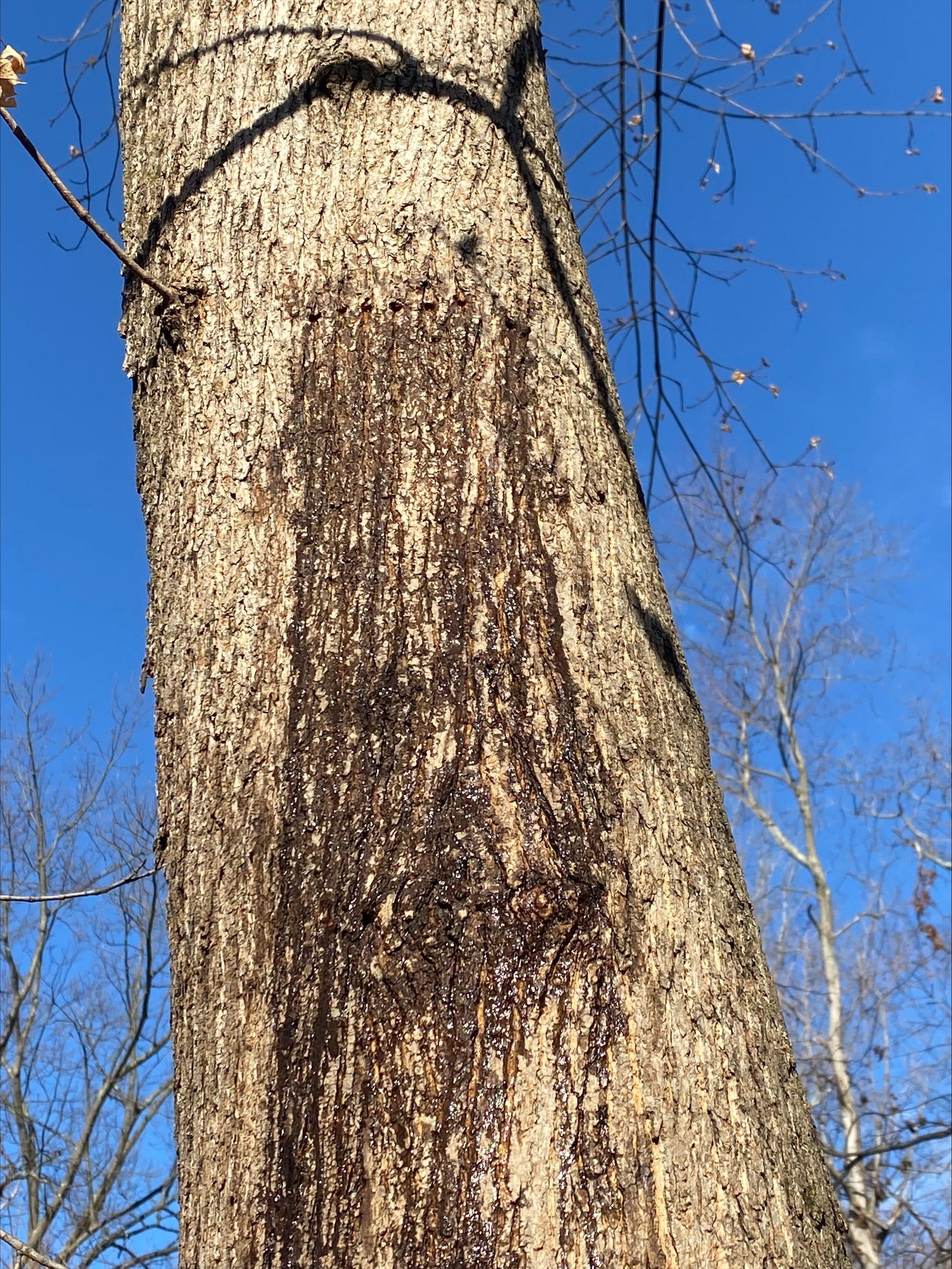Tap Into the Sweetness: The Tradition of Backyard Maple Sugaring
Written By Kris Karpinia
Maple sugaring is an age-old tradition that transforms the sap of Sugar Maple (Acer saccharum) trees into the maple syrup we all love. This process begins in late winter, typically in early February, when the freezing nights and warmer days create the perfect conditions for sap to run through the trunk. The first step to making this sweet treat is tapping the trees—drilling small holes into the trunks and inserting spouts to collect the sap as it flows out.
At Rye Nature Center, an Eagle Scout from Rye’s very own Troop 2 designed and built our dedicated sugar shed in 2008. This is where the sugaring magic happens!
Rye Nature Center’s Sugar Shed (Featuring Land Steward Steven in the window!) - Photo by Kris Karpinia
Once the sap is collected from the buckets that hang on the trees it is transported to the shed, where it’s boiled down in our half-pint evaporator. Sap is about 98% water, so it takes roughly 40 gallons of sap to make just one gallon of syrup. This long and meticulous process requires patience, as the sap must be carefully monitored until it reaches the right consistency and sweetness. Visitors can watch this fascinating transformation and even sample maple syrup during Friends of Rye Nature Center’s upcoming Maple Sugaring program on February 22, 2025 at 9:15 a.m. Preregistration is required, register here! We will also have demonstrations at our annual Old-Fashioned Winter’s Afternoon/Member Day on March 1. Reserve your family’s space today! Members enter for free and there is a nominal fee for non-members.
Editor’s Note:
We caught up with Kris, FRNC’s Director of Public Programs and a seasoned maple sugaring enthusiast, to check in on how our latest program went. Some highlights were a tree tapping demonstration, a tour of our sugar shed, and blind taste testing to see if program participants could tell the difference between the store-bought tabletop syrup and the all-natural stuff coming straight from the trees!
The Results?
The difference was overwhelmingly clear. The most common observation among the participants was the natural stuff was more “goopy” and “tasty” and had a much more natural color.
Maple sap isn’t just for humans, local wildlife also takes advantage of this sweet treat. Squirrels, raccoons, and other small mammals often nibble on sap directly from the trees. One bird in particular, the yellow-bellied sap sucker, is a woodpecker that drills a series of holes into the bark of different trees to obtain the sap. As you hike the trails at Rye Nature Center, keep an eye out for a line of holes, and if you're lucky enough, they may be freshly drilled with sap oozing out similar to the photo below.
Sapsucker holes spotted near Rye Nature Center’s Reflection Space - Photo by Kris Karpinia
Some animals use the sap as an energy source during the colder months when food is scarce. These interactions are part of a delicate ecosystem where humans and wildlife both benefit from the abundance of this special tree.
Maple sugaring is not only a fun tradition, but also an important part of Rye Nature Center's commitment to education and conservation. By engaging with this process, we learn more about our local environment and the animals that rely on it. That said, the end result still makes for a tasty treat!
If you would like to register for our next maple sugaring program, you can pre-register by following the link here!




